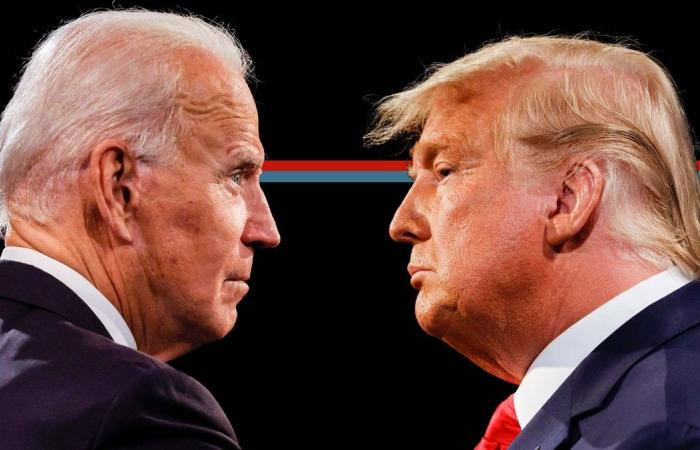Analysts heard by G1 point out that the USA has remained Brazil’s second largest trading partner and that, regardless of the outcome of the elections, an increase in the flow of bilateral business depends more on the economy’s recovery dynamics and greater diversification and competitiveness of the export basket than necessarily the policy of the next government or of greater alignment between countries.
Brazilian trade balance data show that the trade flow (sum of exports and imports) between Brazil and the USA, has remained historically stable over the past decade, at a level between US $ 50 billion and US $ 60 billion per year. In 2019, it was R $ 59.8 billion. The best result in recent years was recorded in 2014, when it totaled R $ 62 billion.
“It is a very mature relationship. We should not have an exponential growth in trade, regardless of the president, nor will there be an abrupt drop,” says Welber Barral, foreign trade strategist at Banco Ourinvest and former national secretary of Foreign Trade.
There is consensus among analysts, however, that in the event of Biden’s eventual victory, the environmental agenda should become a priority theme bilateral relationship and trade negotiations.
“If Biden wins, issues such as protection of the environment, the Amazon, minority rights will become more relevant in the way the US relates to the world and will certainly come to the main stage of discussions, including commercials between Brazil and States States “, says The Executive Vice President of Amcham Brasil, Abrão Neto.
USA is Brazil’s 2nd main trading partner
The USA is the destination of 9.7% of total exports from Brazil and is also the 2nd main source of Brazilian imports, representing 16% of total purchases made by the country.
Despite China surpassing the USA as Brazil’s main trading partner, the United States has maintained its level of participation in the country’s total exchanges. In the first nine months of 2020, however, the share fell to 12.3% of the total, while China saw its percentage rise to 28.8%, amid the strong appetite for Brazilian commodities, such as iron ore, soy and animal protein. See the chart below:
USA continues as Brazil’s second largest trading partner, behind only China – Photo: Disclosure / Amcham
Trade between US and Brazil falls in 2020
The biggest challenge of bilateral trade between the two countries at the moment is to recover the pre-pandemic level. A survey by the American Chamber of Commerce (Amcham Brasil) shows that the trade flow between Brazil and the United States collapsed in 2020 to the lowest level since the 2009 international crisis. See the chart below:
Trade between Brazil and the USA drops to 2009 levels – Photo: Economy G1
The sum of exports and imports between Brazil and the United States from January to September fell 25.1% over the same period in 2019, to US $ 33.4 billion – the worst result for the period of the last 11 years.
In the first nine months of the year, Brazilian imports of products from the USA totaled US $ 18.3 billion, a decrease of 18.8% in comparison with the same interval of 2019. Brazilian exports to the United States fell 31.5%, to $ 15.2 billion. In the partial of the year, the trade deficit with the USA is US $ 3.1 billion. Maintaining the current scenario, Brazil should end 2020 with the largest bilateral deficit in the last 6 years.
It is worth noting, however, that it is not only with the United States that Brazil’s trade flow has shrunk. In 2019, both exports and purchases from abroad fell, but foreign sales fell more. For 2020, the Ministry of Economy estimates that the sum of Brazilian imports and exports should fall by 9%. The forecast is that imports add up to US $ 155.7 billion – down 12.2% – and exports add up to US $ 210.7 billion, down 6.5%.
Although Brazilian exports have been affected by trade restrictions imposed by the Trump administration in sectors such as the steel industry, the strong shrinking in the flow of business between the two countries is mainly explained by the economic crisis brought about by the coronavirus pandemic and the fall in the international price of oil amid lower demand for fuels.
Amcham points out that the rate of decline in the trade flow between Brazil and the United States was more pronounced due to the profile of the most traded products, with a heavy weight of oil, airplanes, inputs for the industry, in addition to the high number of intra-firm operations – when a multinational has shared production and imports from itself.
“The bilateral agenda is composed of goods with higher added value, mainly goods from the manufacturing industry, which was one of the sectors most impacted in international trade, unlike food trade, which suffered a small shock and has already recovered”, says Abrão Grandson.
Analysts downplay the impacts of the side effects of the U.S.-China trade war, as well as the Bolsonaro government’s rapprochement with the Trump administration. They emphasize that, if on the one hand restrictions were imposed on Brazilian exports of steel and aluminum, there were also some gains, such as the reopening for the entry of fresh beef produced by Brazil and the agreement that opened the possibility of commercial exploitation of the center launch of Alcântara, in Maranhão, or the recent memorandum of understanding that provides for the offer of up to US $ 1 billion in credit from the US government to finance projects in Brazil.
“There have been interesting developments in the bilateral relationship, but none of these measures will have an immediate effect of creating trade. None of these agreements is also equivalent to the effect of a Mercosur-European Union agreement, for example,” says Barral.
See below the list of the main products exported to the USA and purchased from there, and the variation in the last year:
Main Brazilian exports to the USA – Photo: Economy G1
Main Brazilian imports from the USA – Photo: Economy G1
Although sectors may be more favored or harmed, depending on the outcome of the elections, the general assessment is that the recent trade agreements between Brazil and the USA tend to gain continuity even in the event of a change of government.
“These are themes that have strong support from the private sector in both countries. There is a large stock of investment from Brazil in the United States and vice versa. Companies will continue to do business with each other and set the tone for the bilateral relationship”, evaluates Neto.
Barral recalls that Democrats tend to be protectionists, but that business between Brazil and the USA should not be shaken by possible disputes or commercial disputes.
“Brazil also has several measures against the United States. This is something that is usual in trade. Biden would probably continue with some trade defense measures, anti-dumping and countervailing measures. But Brazil is not the main target of the USA, but China. “he says.
Need to diversify exports and increase competitiveness
For the executive president of the Brazilian Foreign Trade Association (AEB), José Augusto de Castro, the volume of trade between Brazil and the United States continues to be limited mainly by the country’s “poor trade balance” and the loss of competitiveness of Brazilian industry in the last decades.
In 2019, for the first time in forty years, Brazil exported more basic than industrialized products. Products classified as basic or commodities are those that have no technology involved or finish, such as minerals, fruits, grains and meats.
“In the year 2000, of all that Brazil exported to the world, 59% were manufactured products. Today, they represent only 24%. In other words, Brazil lost market share in the world. As we lost competitiveness, our exports of manufactured goods to the USA have decreased, “explains Castro.
It is this greater dependence on exports of agricultural and mineral commodities that also explains China’s progress in the Brazilian trade balance, while the USA has lost participation.
“To increase trade with the United States you would need to have a free trade agreement, which is very unlikely with any government, or very concrete actions of greater access to very relevant products, which is not easy since Brazil and the USA compete in several of the major commodities “, says Barral, citing products such as soybeans, corn, cotton, ethanol and meats.
AEB survey shows that Brazil’s participation in world exports has remained practically stagnant in recent decades, from 0.99% in 1980 to 1.23% in 2018, while that of China jumped from 0.88% to 12.77% in the same interval, and that of the USA fell from 11.06% to 8.54%.
“The world moved and Brazil stopped. China moved faster than everyone and the United States lost part of the market that they had in the past”, summarizes Castro.
Brazil’s trade with the US fell to its lowest level in 11 years
Videos: see the latest economy news in Brazil and worldwide
These were the details of the news Trump or Biden: how trade between Brazil and the US can... for this day. We hope that we have succeeded by giving you the full details and information. To follow all our news, you can subscribe to the alerts system or to one of our different systems to provide you with all that is new.
It is also worth noting that the original news has been published and is available at time24.news and the editorial team at AlKhaleej Today has confirmed it and it has been modified, and it may have been completely transferred or quoted from it and you can read and follow this news from its main source.





